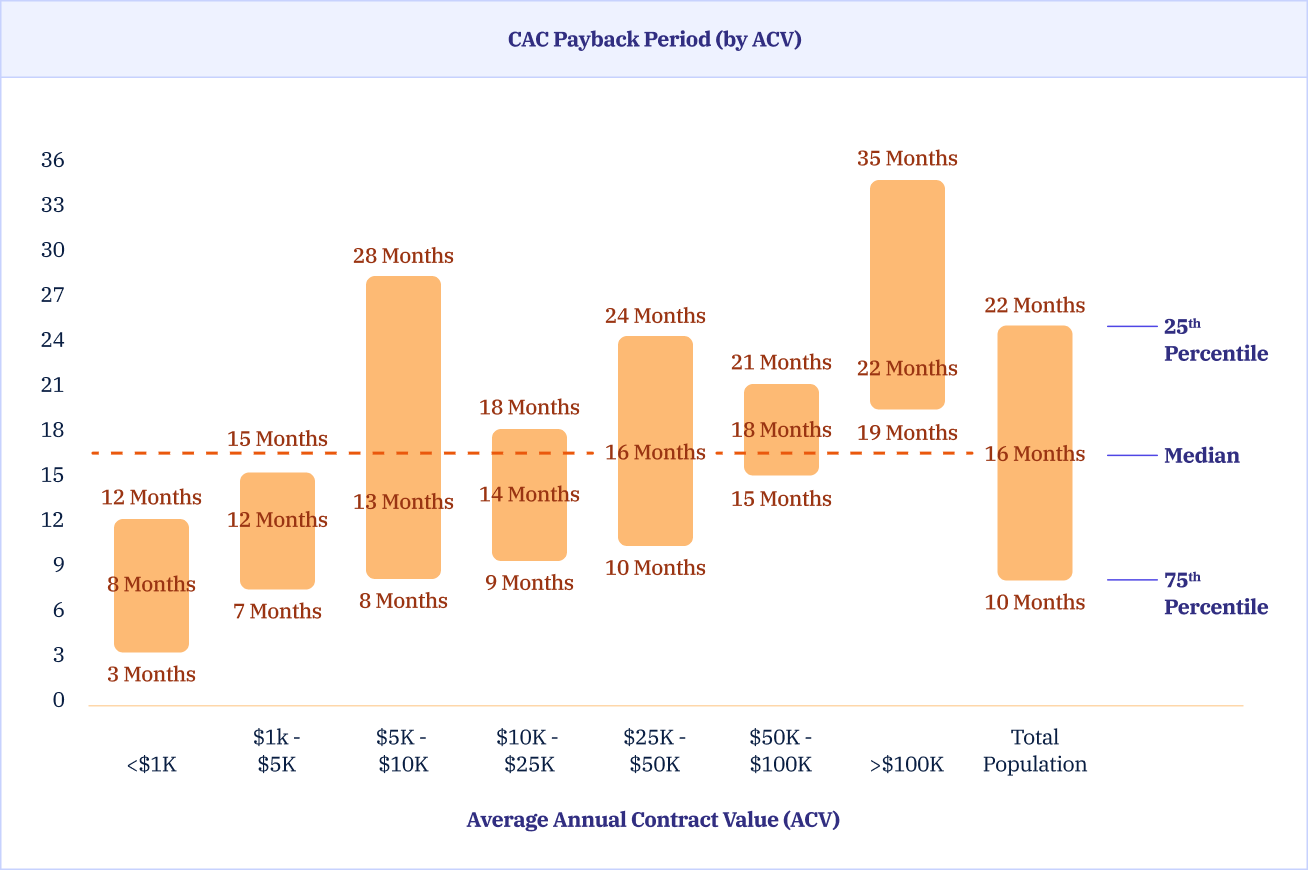How to reduce your CAC payback period
Given that shorter is better, it’s essential to know how to reduce your CAC payback period. Fortunately, there are several ways you can do this.
Eliminate common factors that increase your CAC payback period
You can reduce your CAC payback period by focusing on focusing on the one or more of the factors that influence it:
- Low gross margins – Low gross margins in SaaS businesses are caused by high delivery costs. Looking for ways to reduce your delivery costs, such as optimizing your cloud computing costs or finding ways to streamline how you deliver support services, can have a positive impact on your CAC payback period.
- Inefficient discounting - Analyze how your discounting policies might be impacting your CAC payback period. While high discounts can incentivize growth, they can also increase your payback period to unsustainable levels.
Invest in product-led growth strategies
Product led growth (PLG) companies typically achieve a shorter CAC payback period than companies that rely heavily on sales-led growth (SLG). This is because they incur fewer marketing and sales-related costs, which reduces CAC and the amount of time it takes to recover those costs.
Ensuring a great product/market fit goes a long way towards reducing your CAC payback. Your marketing will be on point, helping you reduce your sales cycles and overall CAC.
Optimize your marketing and sales funnels
To reduce your CAC payback, try to reduce your CAC as much as possible. Given the role marketing expenses play in the money you spend acquiring customers, increasing your marketing funnel’s efficiency will pay dividends.
Focus on boosting conversion rates and eliminating inefficient tasks. This will give your teams more time to analyze funnel leaks and ideal customer personas.
Learn more about funnel planning and optimization in our new business ARR planning guide.
Upsell, cross-sell and boost retention
Shorten your CAC payback period by encouraging your existing customers to purchase additional features, other products, and more seats. Retention is a significant factor in your ability to recover your CAC.
Remember that LTV and a low CAC payback period is a result of sound processes. Focusing on what increases LTV, such as controlling CAC and boosting retention, automatically brings you the results you want, boosting your LTV:CAC ratio and decreasing CAC payback period.
Review your pricing model
Another way to improve your CAC payback is to examine your pricing model to see if you can improve your gross margin. Doing so will have a significant impact given that gross margin is a key variable in the CAC payback period formula.
Target higher-value markets
Finally, it’s always a good idea to look into whether expanding into a higher-value market segment is viable. Enterprise customers, for instance, are generally more willing to pay in one lump sum or to commit to extended contracts than smaller customers.
A prepaid pricing model can reduce CAC faster depending on what your current CAC payback period is. For example, if your CAC payback period is nine months, and you sign an annual contract, paid in full at the beginning of the contract, your CAC payback period for that customer is zero days. This is because you recouped your costs on day one.
On the other hand, if you currently have a longer CAC payback period of 14 months for example, your CAC payback period for that same customer would become 12 months assuming the customer renews, because you wouldn’t fully recoup your CAC until the customer renews at the end of the first year.
By targeting higher-value customers willing to sign a two- or three-year contract, which is the norm for enterprise customers, the more you can get them to pay up front on that contract, the lower your CAC payback period will be.















.svg)